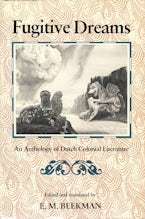- Home
- Massachusetts Studies in Early Modern Culture
- The Politics of Courtly Dancing in Early Modern England

The Politics of Courtly Dancing in Early Modern England
Published by: University of Massachusetts Press
Series: Massachusetts Studies in Early Modern Culture
224 Pages, x 1.00 in
Other Retailers:
This book argues that in early modern England, dance was not merely a pleasant pastime, but an intricate network of bodily negotiations of power, sex, and territory as well. Traditionally a vital part of popular festivals and seasonal celebrations, dancing moved from public, open spaces into the confines of the court during the early Tudor era and became an important means of aristocratic self-fashioning.
Skiles Howard examines the social and semiotic complexities of dancing as it changed over time and performed different work in court, city, and playhouse. She shows how dancing reflected and shaped wider social changes: the performance of gender roles facilitated the formation of the patriarchal family, the execution of physical tropes of hierarchy supported the rise of a centralized state, and rehearsals of spatial mastery assisted the project of national expansion. As a visual and kinetic discourse by which social norms were circulated, dancing inevitably became a site of contestation; as elite and popular practices collided, interacted, and were transformed, countervailing social forces found expression through the medium of dancing.
Interdisciplinary in its approach, this study draws on court masque and popular drama, dancing manuals, Puritan pamphlets, and educational and medical treatises to explore issues of power and the body, gender and rank, popular culture and European expansion.
Skiles Howard examines the social and semiotic complexities of dancing as it changed over time and performed different work in court, city, and playhouse. She shows how dancing reflected and shaped wider social changes: the performance of gender roles facilitated the formation of the patriarchal family, the execution of physical tropes of hierarchy supported the rise of a centralized state, and rehearsals of spatial mastery assisted the project of national expansion. As a visual and kinetic discourse by which social norms were circulated, dancing inevitably became a site of contestation; as elite and popular practices collided, interacted, and were transformed, countervailing social forces found expression through the medium of dancing.
Interdisciplinary in its approach, this study draws on court masque and popular drama, dancing manuals, Puritan pamphlets, and educational and medical treatises to explore issues of power and the body, gender and rank, popular culture and European expansion.
An independent scholar, Skiles Howard has taught at Columbia and Brown universities. She is coeditor of A Midsummer Night's Dream, a volume in the Bedford Texts and Contexts series.
"This book will take a founding place in the growing interdisciplinary field that conjoins dance and literary studies. It is well researched, well written, and sustains an original and articulate argument that constitutes an important contribution to Renaissance literary and performative scholarship."—Mark Franco, University of California, Santa Cruz











